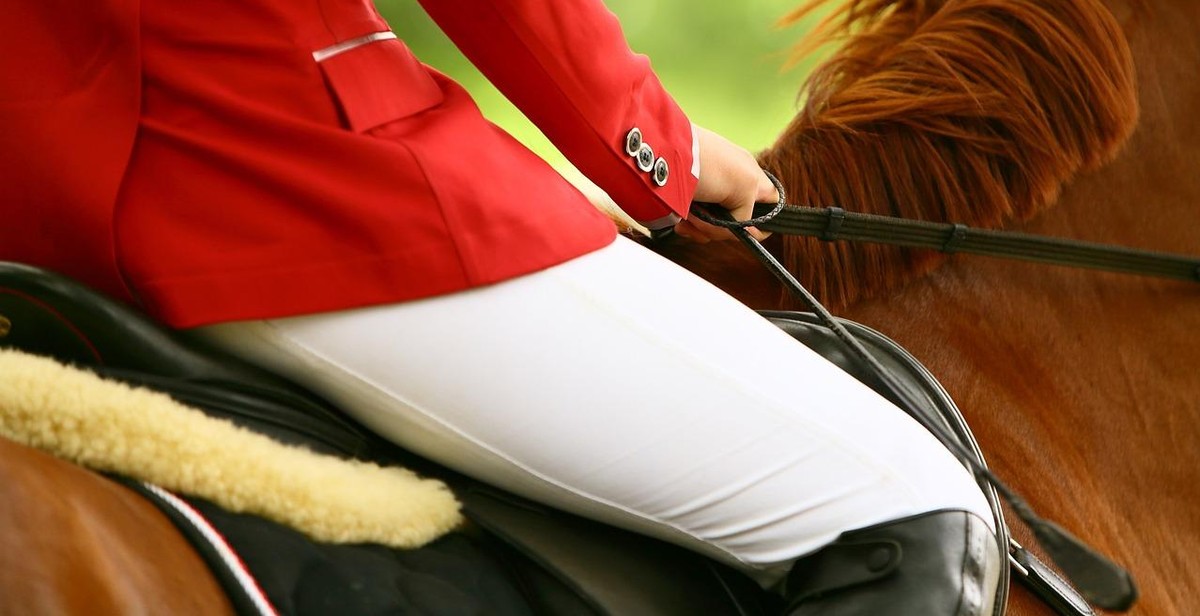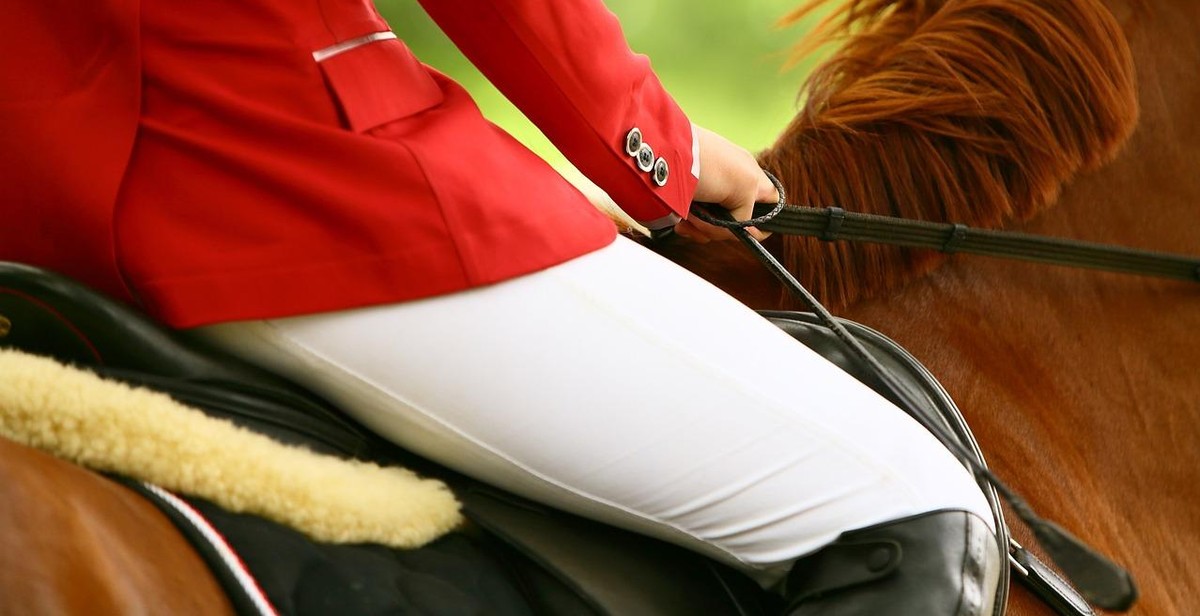How to Select the Right Horse for Show Jumping: Assessing Jumping Ability and Temperament
As a professional equestrian and show jumper, I have spent years honing my skills in selecting the perfect horse for competition. It takes a lot more than just good looks to win in show jumping; you need a horse that is not only physically capable but also has the right temperament to handle the pressure of the arena.
Assessing Jumping Ability
Jumping ability is the most critical factor in selecting a horse for show jumping. A horse that can jump higher and further with ease has a better chance of winning. When assessing jumping ability, pay attention to the horse’s form, technique, and scope.
- Form: Look at the horse’s shape over the jump. A good jumper will have its front legs tucked up to its chest, and its hind legs will be stretched out behind it.
- Technique: Watch how the horse approaches the jump. A good jumper will take off at the right distance and angle, with a smooth and effortless motion.
- Scope: Observe how high and far the horse can jump. A good jumper will have a lot of scope, making it easier to clear higher and wider jumps.
Assessing Temperament
Temperament is just as important as jumping ability when selecting a horse for show jumping. A good show jumper should be brave, confident, and calm under pressure. When assessing temperament, look for the following qualities:
- Bravery: A brave horse will not hesitate or shy away from any jump, no matter how intimidating it may seem.
- Confidence: A confident horse will approach the jump with a positive attitude, knowing that it can clear it with ease.
- Calming Influence: A horse that can calm its rider and remain focused in a high-pressure environment is an asset to any show jumping team.
By assessing both jumping ability and temperament, you can select the right horse for show jumping and increase your chances of success in the arena.
Assessing Jumping Ability
When it comes to selecting a horse for show jumping, assessing their jumping ability is crucial. There are several factors to consider, including conformation and athleticism, jumping technique, and previous performance.
Conformation and Athleticism
The conformation and athleticism of a horse are essential for their jumping ability. The horse’s conformation should be evaluated to ensure they have the necessary physical structure for jumping. A horse with a long, sloping shoulder and a short back is ideal for jumping as it allows for a more extended stride and better balance. Additionally, a horse with strong, straight legs and well-developed hindquarters will have the power to push off the ground and clear obstacles with ease.
Athleticism is also a critical factor in assessing a horse’s jumping ability. A horse with a natural ability to jump will have a quick, powerful jump and be able to maintain their balance in the air. They should also be able to adjust their stride to meet the demands of each jump and land softly on the ground.
Jumping Technique
The jumping technique of a horse is another essential factor to consider when assessing their jumping ability. A horse with a good jumping technique will be able to clear obstacles with minimal effort and maintain their balance throughout the jump. They should also be able to take off and land on the correct lead, allowing for a smooth transition between jumps.
While evaluating a horse’s jumping technique, it’s essential to consider their natural jumping style. Some horses have a more round jumping style, while others have a flatter, more efficient style. Both styles can be effective, so it’s important to choose a horse whose jumping style fits your preferences and riding style.
Previous Performance
Previous performance is an excellent indicator of a horse’s jumping ability. If a horse has a history of successful performances in jumping competitions, it’s likely they have the necessary skills and athleticism for the sport. However, it’s important to consider the level of competition they have previously competed in and whether their skills will translate to the level at which you plan to compete.
Additionally, evaluating a horse’s previous performance can provide insight into their temperament. A horse that has performed well in competitions is likely to have a good work ethic and a willingness to learn and perform.
| Factors to Consider | Importance |
|---|---|
| Conformation and athleticism | High |
| Jumping technique | High |
| Previous performance | Medium |
Overall, assessing a horse’s jumping ability requires a combination of evaluating their conformation and athleticism, jumping technique, and previous performance. By considering all of these factors, you can select a horse that has the necessary skills and temperament to excel in show jumping.
Evaluating Temperament
When it comes to selecting a horse for show jumping, temperament is just as important as jumping ability. A horse’s temperament can greatly affect its trainability, willingness to work, energy level, nervousness, and spookiness. Here are some key factors to consider when evaluating a horse’s temperament:
Trainability and Willingness
A horse’s trainability and willingness to work are crucial for success in show jumping. You want a horse that is easy to train and eager to learn. Look for a horse that responds well to basic commands and is quick to pick up new skills. A horse that is willing to work and enjoys jumping will be more motivated and focused in competition.
Energy Level
The energy level of a horse is another important factor to consider. You want a horse that has enough energy to perform well in competition, but not so much that it becomes difficult to control. A horse with too much energy may become easily distracted or difficult to handle, while a horse with too little energy may lack the drive needed to excel in show jumping.
Nervousness and Spookiness
Nervousness and spookiness are common problems in horses, especially in high-pressure situations like competitions. Look for a horse that is calm and confident, even in stressful situations. A horse that is easily spooked or nervous may become unpredictable or unsafe in the show ring.
Overall, selecting the right horse for show jumping requires careful consideration of both jumping ability and temperament. By evaluating a horse’s trainability, willingness, energy level, nervousness, and spookiness, you can find a horse that is well-suited for the demands of show jumping competition.

Matching Horse and Rider for Show Jumping
When it comes to show jumping, selecting the right horse is crucial for success. However, it’s not just about finding a horse with the right jumping ability. A good match between horse and rider is equally important. Here are some factors to consider when matching horse and rider for show jumping:
Experience and Skill Level
Matching the experience and skill level of the rider and horse is essential for success in show jumping. A beginner rider with little experience may struggle with a highly trained, sensitive horse, while an experienced rider may find a less experienced horse limiting. It’s important to find a horse that matches the rider’s level of experience and skill, as well as the rider’s goals and aspirations.
Compatibility
Compatibility between horse and rider is also crucial. A rider may be skilled and experienced, but if they don’t click with the horse, it can negatively impact performance. The horse and rider should have a good rapport, with the rider understanding the horse’s quirks and the horse responding well to the rider’s cues. A horse that is difficult or unresponsive to one rider may perform well with another, so it’s important to find the right match.
Chemistry
Chemistry between horse and rider is another important factor. A rider who enjoys spending time with their horse, grooming, and caring for them will likely have a better relationship with the horse and perform better in the ring. A horse that enjoys the rider’s company and responds well to their touch and voice cues will also perform better. It’s important to find a horse that the rider feels a connection with.
Conclusion
Matching horse and rider for show jumping requires careful consideration of several factors, including experience and skill level, compatibility, and chemistry. Finding the right horse and rider match is essential for success in show jumping.

Conclusion
Selecting the right horse for show jumping can be a daunting task, but it is vital for success in this sport. By assessing both jumping ability and temperament, you can ensure that you find a horse that is not only capable of performing well but also enjoyable to work with.
When assessing jumping ability, it is important to consider the horse’s conformation, athleticism, and technique. A horse with good conformation and athletic ability will be more capable of performing at high levels, while a horse with good technique will be able to clear jumps with ease.
Temperament is also crucial when selecting a horse for show jumping. A horse with a calm and willing temperament will be easier to train and work with, leading to a better partnership and improved performance in the ring.
Remember to take your time when selecting a horse and to seek the advice of experienced professionals. By following these tips and utilizing the resources available to you, you can find the perfect horse for show jumping and achieve success in this exciting and challenging sport.
